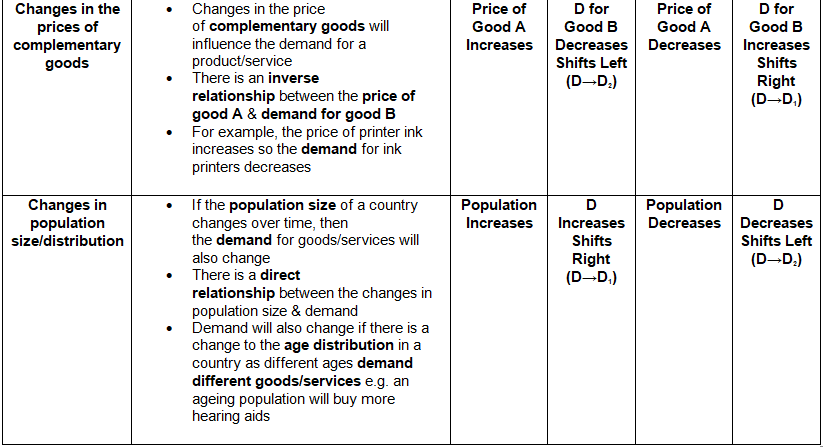Class 10 Exam > Class 10 Notes > Economics for GCSE/IGCSE > Conditions of Demand
Conditions of Demand | Economics for GCSE/IGCSE - Class 10 PDF Download
Shifts of the Demand Curve
- The demand for a good or service can be influenced by various factors beyond changes in price, collectively known as the conditions of demand.
- Alterations in these conditions cause shifts in the entire demand curve rather than just movements along it.

Shift in Demand due to Increased Instagram Advertising:
- This scenario exemplifies how a firm's decision to increase Instagram advertising can lead to a rise in demand for a product. As more consumers become aware of the product, the demand shifts from D to D1. Despite the price remaining constant at £7, the quantity demanded increases from 15 to 25 units.
An Explanation of How Each of the Conditions of Demand Shifts the Entire Demand Curve at Every Price Level


The document Conditions of Demand | Economics for GCSE/IGCSE - Class 10 is a part of the Class 10 Course Economics for GCSE/IGCSE.
All you need of Class 10 at this link: Class 10
|
56 videos|97 docs|38 tests
|
FAQs on Conditions of Demand - Economics for GCSE/IGCSE - Class 10
| 1. What are the conditions of demand in economics? |  |
Ans. The conditions of demand in economics refer to the factors that can influence the demand for a particular good or service. These factors include the price of the product, consumer income, consumer preferences, the prices of related goods, and consumer expectations.
| 2. How do changes in consumer income affect demand? |  |
Ans. Changes in consumer income can have a significant impact on demand. If consumer income increases, people are more likely to purchase more goods and services, leading to an increase in demand. On the other hand, if consumer income decreases, demand may decrease as people have less money to spend.
| 3. What is the relationship between the price of related goods and demand? |  |
Ans. The price of related goods can also impact demand. If the price of a substitute for a good decreases, the demand for the original good may decrease as consumers switch to the cheaper alternative. Conversely, if the price of a complementary good increases, the demand for the original good may decrease as well.
| 4. How do consumer preferences affect demand for a product? |  |
Ans. Consumer preferences play a crucial role in determining demand. If consumers develop a preference for a particular product, demand for that product is likely to increase. Conversely, if consumer preferences shift away from a product, demand may decrease.
| 5. How can consumer expectations influence demand? |  |
Ans. Consumer expectations about future prices, income, or other economic factors can impact current demand. For example, if consumers expect prices to increase in the future, they may increase their current demand in order to avoid paying higher prices later on. Similarly, if consumers expect their income to decrease, they may reduce their current demand for goods and services.
Related Searches















